This time of year in particular we get numerous inquiries from anxious brides and grooms who rightfully care about what wines they will serve at their wedding, but are stressed to the max about choosing them for their big day. While some weddings have specifications which call for a professional consult, many others are more streamlined. For the latter case, we thought it might be time to write up a few How To's to take the stress out of this project!
The three most common criteria couples present to us:
1. User-friendly: We want wines that everyone will enjoy, whether they are "usually" an X-wine drinker or not.
2. Food-friendly: We want the wines to work with what we're serving, whether someone opted for the fish, chicken or tenderloin.
3. Cost-effect: We don't want to serve anything "cheap", but if we could keep things under(?!) or around $15 per bottle, that would be great...
You can address all of these concerns in just a few steps:
TIP #1: Streamline your offerings
There are reasons (yes, plural) "His and Her Cocktails" are so popular... It's festive, for sure, and fewer options for guests tightens up your liquor order (read: budget), focuses consumption, AND expedites service! So approach wine offerings similarly and CHOOSE "HOUSE" WINES: by offering your sparkler plus a crowd-pleasing white and red (with maybe a beautiful dry rose thrown in for good measure), you will satisfy the majority (if not all!) of your guests. Remember, these three options offer enough variety themselves. So have fun with it! You could even come up with creative or personal names for each choice.
TIP #2: Pick a Perky White
Wines with higher acidity are food-friendly by nature; but their mouthwatering effect also comes in handy when your best friend just got stuck talking to crazy Aunt Edna or you've got dancing on the agenda. Sauvignon Blanc works, sure!, but one of our other "sneaky" tricks is to select grape varietals that guests may not have ever heard of, let alone tasted. Case in point: as popular as Austrian Gruner Veltliner and Spanish Albarino are becoming, these are not grapes that everyone knows (though they should!). Offering something people have no expectations about means they just simply sip and enjoy!
TIP #3: Select a Smooth Red
When it comes to selecting your red offering, you want something that strikes a middle ground - something not too bold and dry, and something not too light so that guests use that dreaded wine word "thin". You also want something that goes down smooooth - something with nice fruit and soft edges. Here again, a way to work around the grape varietal fatigue (aka I only drink California Cab...) is to choose wines that are named for their region, with no varietal labeling evident. Smart picks are red wines from the Cotes du Rhone (fabulous, food-friendly red blends) or wallet-friendly Spanish Rioja (the more expensive options often mean the wine has spent more time in oak barrels, which puts the wine into the "too bold" camp). Both of these regions have prolific, 100% delicious options that are exceptional values!
TIP #4: Bubbles!
Some say you should splurge in this category; we don't necessarily agree. While you certainly can splurge here, remember that the nuances that a higher priced bubbly offer are likely going to be lost in the equation. More often sparkling wine is consumed per tradition, or to add an additional festive flare. And there are SO many great options from outside of Champagne, France that lend exactly the helping hand you desire, with plenty of Delight on offer at oh-so reasonable prices. For some suggestions beyond the happy usual suspects Cava and Prosecco, check out other alternatives here!
So now the question of quantity: how much is enough?
The good news is, there is a formula for this quandary! While consumption as a whole tapers off over the course of the festivities, some people will hit it harder as the evening progresses. Taper-ers tend to beat the Hard-hitters, but either way, if you assume one drink per person per hour* you'll have more than enough to go around.
There are five glasses of wine in every bottle, six when it comes to a sparkling wine toast.
So if you have 100 guests and a six hour event, figure 600 total drinks. Divide 600 by 5 to figure out how many bottles are needed (120) and then by twelve to get the number of cases needed (twelve bottles in a case) = 10 cases of wine. You can then decide how many cases of each wine you'd like to have on hand based on your knowledge of your guest list, wedding date and venue (e.g. more red wine drinkers than white, hot summer day under a tent vs. cold and wintery, etc.)
*Note: This is number of DRINKS, not just wine. If you are serving beer, wine and liquor, estimate the number of wine drinkers and go from there to gauge your wine purchase. Alternatively, you can adjust the number of hours you think people will be drinking wine, e.g. cocktail hour (1.5 glasses) + dinner hour (1.5 glasses) + dancing (1 glass) = 4 wine drinks per person, or 400 total glasses = 80 bottles of wine = 7 cases (always round up).
With this approach you'll be setting yourself up for success! Now all you have to do is taste a few wines in each of these categories and make the final decision.
Stuck or have a bigger wedding wine quandry? Give us a shout! We'd be happy to help you navigate this component. Rebecca@Pour-Favor.com



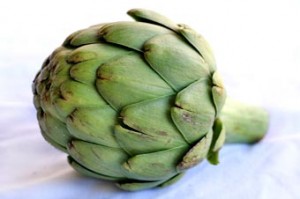
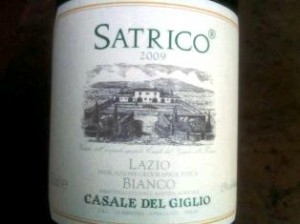
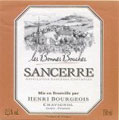 Ever grown particularly attached to a particular vintage of a particular wine? The good (and sometimes sad) news about wine is it is often changing! It is not a genre where you can rest on your laurels; the juice will run out – and the best ones often do sooner than later. Fortunately, this reality is part of what makes wine romantic. Nostalgia is a big part of the wine equation!
Pop on over to
Ever grown particularly attached to a particular vintage of a particular wine? The good (and sometimes sad) news about wine is it is often changing! It is not a genre where you can rest on your laurels; the juice will run out – and the best ones often do sooner than later. Fortunately, this reality is part of what makes wine romantic. Nostalgia is a big part of the wine equation!
Pop on over to 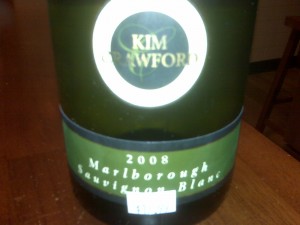 It's not often I talk about what I consider "main stream" wine: wine you can get just about anywhere, no matter how large or small the shop. In our case, we are so small every wine slot counts. We have to be even more choosey when it comes to our selection. We are equally careful not to pack our shelves with things you CAN, in fact, get anywhere; our brand is built around finding unique, harder to find, boutique selections.
Except when it comes to the Kim Crawford Sauvignon Blanc. This is a wine I have no issue 'giving up' a slot to. I think it is absolutely delicious. The fact that the price came down a couple of dollars this year makes me even more gleeful about it - it was pushing my limits previously at $19.99.
It's not often I talk about what I consider "main stream" wine: wine you can get just about anywhere, no matter how large or small the shop. In our case, we are so small every wine slot counts. We have to be even more choosey when it comes to our selection. We are equally careful not to pack our shelves with things you CAN, in fact, get anywhere; our brand is built around finding unique, harder to find, boutique selections.
Except when it comes to the Kim Crawford Sauvignon Blanc. This is a wine I have no issue 'giving up' a slot to. I think it is absolutely delicious. The fact that the price came down a couple of dollars this year makes me even more gleeful about it - it was pushing my limits previously at $19.99.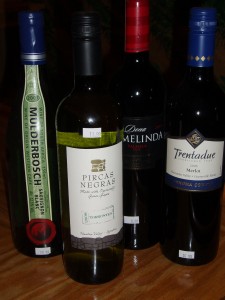 I can hardly believe it is already June - 6 months of 2009 are behind us and only 6 more to go! Time to officially get our beach chairs out of storage and fill up a second propane tank as "back up" for those terrific nights of grilling ahead. The only thing needed is a few good ideas for what to uncork this month...
Head on over to
I can hardly believe it is already June - 6 months of 2009 are behind us and only 6 more to go! Time to officially get our beach chairs out of storage and fill up a second propane tank as "back up" for those terrific nights of grilling ahead. The only thing needed is a few good ideas for what to uncork this month...
Head on over to 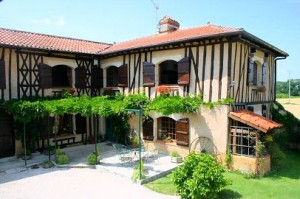 Every time a wine from Gascony, France comes across the tasting table, Disney's Beauty and the Beast comes to mind. I have no idea why. I've never even been to
Every time a wine from Gascony, France comes across the tasting table, Disney's Beauty and the Beast comes to mind. I have no idea why. I've never even been to  Ok. Bad joke. (I can't take full credit as one of my best friends, fellow foodie and wine lover actually fed it to me.) What can I say? Sometimes a little levity is needed!And it was Cinco de Mayo yesterday....
Ok. Bad joke. (I can't take full credit as one of my best friends, fellow foodie and wine lover actually fed it to me.) What can I say? Sometimes a little levity is needed!And it was Cinco de Mayo yesterday....
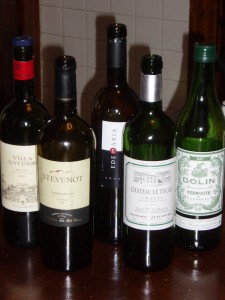 I hope you and yours had a wonderful time popping a cork or two last Saturday night for
I hope you and yours had a wonderful time popping a cork or two last Saturday night for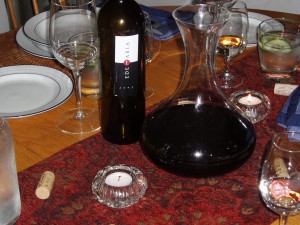 %) and Cabernet Sauvignon (25%). My inspiration for the paprika braised chicken was distinct from the wine I knew I would have on offer, so decanting was a priority to soften any rough edges and remove the sediment the wine was likely to throw. Since I know my friend prefers fruit-forward wines to uber-dry ones, I hoped this wine would deliver a nice silky mouthfeel, with both red and black fruits apparent. Finally, given the region's proximity to the Priorat, I hoped it would have a gentle herbaceousness and a touch of earthy leather. I was pleased to discover it delivered on all of the above!
%) and Cabernet Sauvignon (25%). My inspiration for the paprika braised chicken was distinct from the wine I knew I would have on offer, so decanting was a priority to soften any rough edges and remove the sediment the wine was likely to throw. Since I know my friend prefers fruit-forward wines to uber-dry ones, I hoped this wine would deliver a nice silky mouthfeel, with both red and black fruits apparent. Finally, given the region's proximity to the Priorat, I hoped it would have a gentle herbaceousness and a touch of earthy leather. I was pleased to discover it delivered on all of the above!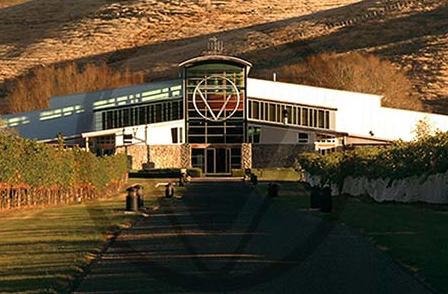 getaway, I sneakily packed a few wines in my Survival Kit that fit with this
getaway, I sneakily packed a few wines in my Survival Kit that fit with this